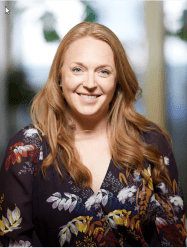The 2021 U.N. General Assembly met at a tumultuous time for the world and for the United States—with looming concerns about climate change, rising inequality within and between countries, and a pressing need to ensure an equitable and sustainable global response to the COVID-19 pandemic. These issues are central to the Sustainable Development Goals (SDGs), a set of ambitious targets for 2030 that all countries agreed in 2015 to address poverty, climate change, and inequalities. The Biden-Harris administration—as it works to re-engage and rebuild credibility at home and abroad—is advancing policy priorities that are consistent with the SDGs, even if it has not yet signaled how it might apply them to its domestic agenda.
Against this backdrop, the United Nations Foundation and the Brookings Institution hosted the third edition of their annual event, American Leadership in advancing the Sustainable Development Goals, to showcase new commitments and innovations from all segments of U.S. society to advance equity and sustainability in forging a better future path. The event featured elected officials, young leaders, and leaders from philanthropy, business, and universities whose collective work on the SDGs embodies the extent to which these global goals are rooted in American values and priorities.
Here are five key takeaways from the event:
1. American leadership on the SDGs continues to grow
A growing movement of leaders across the country is finding the SDGs to be the roadmap and policy framework to mobilize for progress on ambitious targets around inclusion, equity, and sustainability. The SDGs also serve as a unifier for identifying common goals and partnerships within communities helping nongovernment actors, corporations, philanthropy, and local governments align their efforts and inspire action.
The SDGs have been especially valuable for local government as they provide metrics to monitor social and environmental progress and to better integrate equity and action on climate change into economic growth strategies. Building on past leadership exhibited by New York City, Los Angeles, Pittsburgh, and Hawaii, Mayor Buddy Dyer announced the launch of Orlando’s first Voluntary Local Review (VLR), becoming the fourth U.S. city to track and report on its SDG progress. Phoenix Mayor Kate Gallego reiterated her city’s support for the SDGs by announcing a commitment to conduct their own VLR in partnership with the Thunderbird School of Global Management.
The SDGs help us broaden our understanding of the word [sustainability] and realize that it actually includes all types of issues that are not just specifically carbon reduction. – Buddy Dyer, Mayor of Orlando
2. Equity must be at the center of sustainable development
The SDG’s central commitment to equity, justice, environmental resilience, and ensuring no one is left behind is as applicable and relevant in the U.S. as it is for countries around the world. Addressing the pervasive and systemic inequities in the U.S., whether these are socio-economic, racial, or gender-based, must be a cornerstone principle of public policy interventions. PolicyLink President and CEO Michael McAfee stressed that “our democracy and our economy have not fundamentally been optimized for this group and that’s the opportunity that is embodied in the SDGs.” As Merchon Green, Orlando’s chief equity officer, commented, this requires getting to the root cause of issues and determining what barriers are present, while engaging those communities to shape priorities and identify solutions. It also means holding leaders to account.
One in three people in America, the wealthiest nation in the world, are economically insecure. It’s for this very reason the SDGs have been established. This is a design challenge for the nation. – Michael McAfee, President and CEO, PolicyLink
3. Partnerships help scale solutions
By using the SDGs and the SDG indicators as the North Star, we can work together collectively to ensure that we’re maximizing our available resources. – Sandi Vidal, Vice President of Community Strategies and Initiatives, Central Florida Foundation.
Making sustained progress—at the scale needed—requires partnerships at different levels and across different sectors, from government and the private sector, to nonprofits, universities, and philanthropies. The SDGs are increasingly being used as the basis for these efforts. For example, Merck, a pharmaceutical company that works in the United States and globally, utilizes the SDG framework to catalyze resources and measure progress on mitigating maternal mortality and other health inequalities across the U.S and around the world. The Chicago Community Trust is using the SDGs to connect its local work in Chicago to the global community. In the Orlando region, the common language of the SDGs has helped deepen collaboration across municipalities and counties to develop a joint resiliency plan. The Central Florida Foundation (CFF)’s Thrive Central Florida initiative embraces the interconnected nature of the goals to raise and distribute resources to improve economic stability, well-being, education, and livability at once.
Ultimately, we need all of these partners. We need government. We need the private sector. We need philanthropy to be able to create these kinds of solutions. – Helene Gayle, President and CEO of Chicago Community Trust.
4. American youth are critical actors for impact
Young people across the U.S. are already living with the impacts of the world’s most pressing challenges and want their voices and leadership to be taken seriously. According to a recent poll from the Better World Campaign and UN Foundation, a majority of young Americans aged 18-35 believe younger generations are more equipped than older generations to solve the world’s most pressing issues, and that they can have a positive impact. Universities have an important role to play in elevating youth leadership and in making sure that young people are equipped to address these global issues. It is also incumbent upon leaders at all levels to invite youth to the table in an authentic way.
Our world can only drive forward the SDGs if we ensure that every person is included in the ride, especially our nation’s youth. We have our voices now. We just need to be heard. – Cynthia Yue, the UNA-USA Youth Observer to the United Nations
5. Embracing the SDGs domestically helps restore U.S. credibility, including globally
To be a global leader, the United States has to be a global example. The United States is not existing above or apart from these goals. The United States is a part of these goals. – Congresswoman Sara Jacobs (D-CA-53)
Multiple speakers emphasized the opportunity for the U.S. to build on the multifaceted leadership across American society for the SDGs. “For too long we have helped to forward frameworks that we have not used ourselves,” said Helene Gayle, President and CEO of The Chicago Community Trust. The SDGs “remind us that the same inequities that we see between countries also apply to the inequities we see here in the United States.” Their incorporation into local and state policies, business and university strategies, and wide-ranging partnerships highlights how much the SDGs are rooted in U.S. values and ideals. Embracing the SDGs can help the Biden administration elevate the role of the U.S. in the world.
I urge you all to think about ways to ensure that marginalized communities feel like they belong so that this country can truly live up to the motto, justice and liberty for all. Together we can work to build a future that leaves no one behind. – Leena Abdelmoity, Human Rights Advocate and GirlUp Teen Advisor Alumna







Commentary
Growing American leadership on the Sustainable Development Goals
November 22, 2021